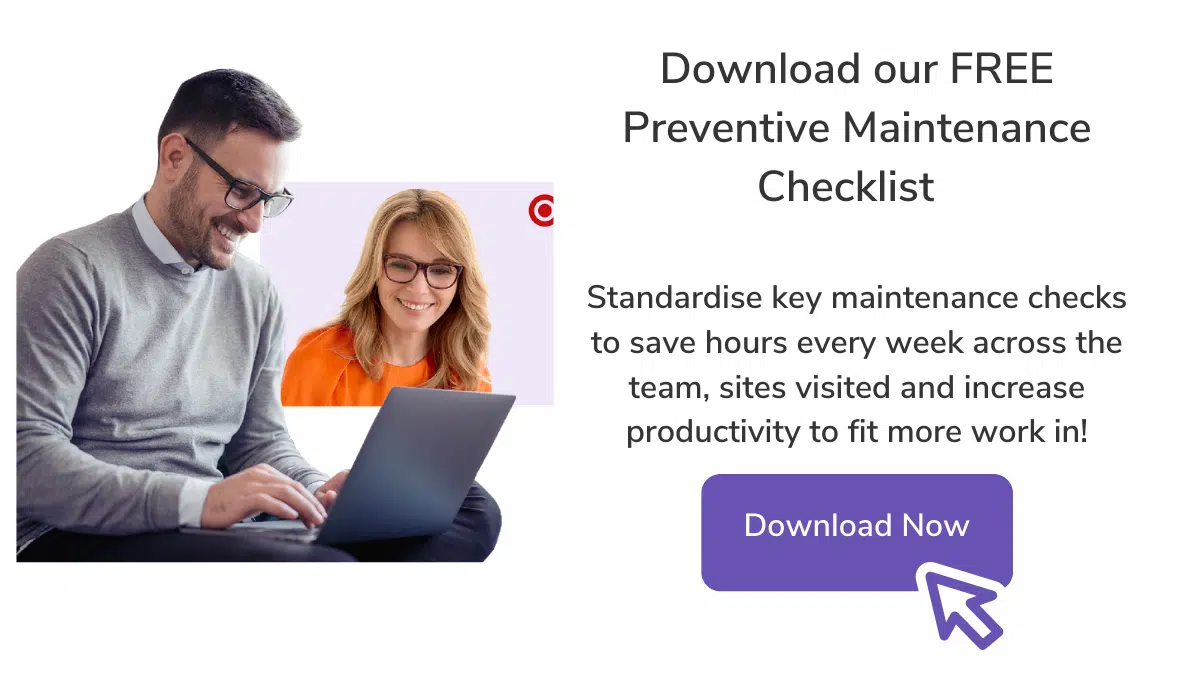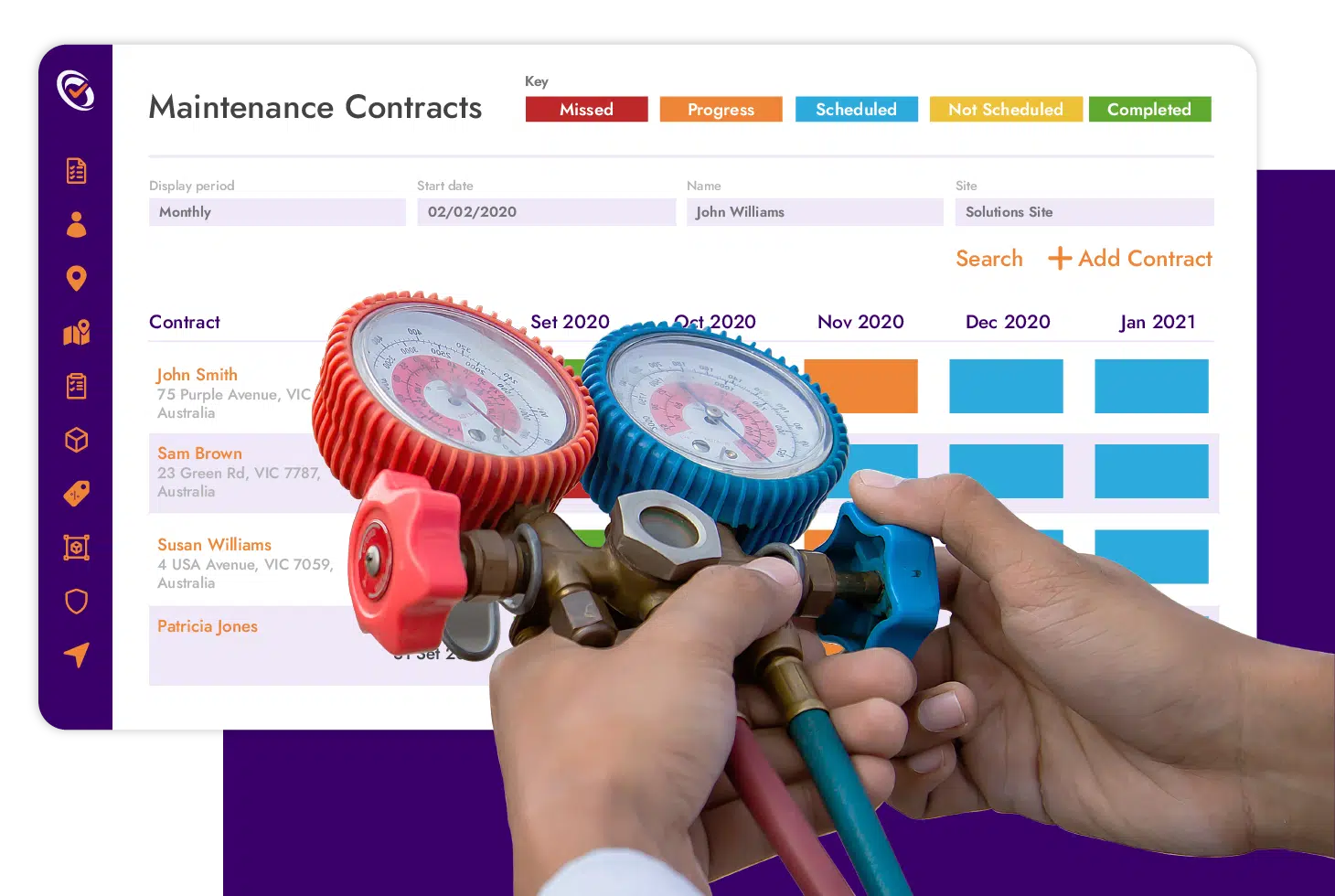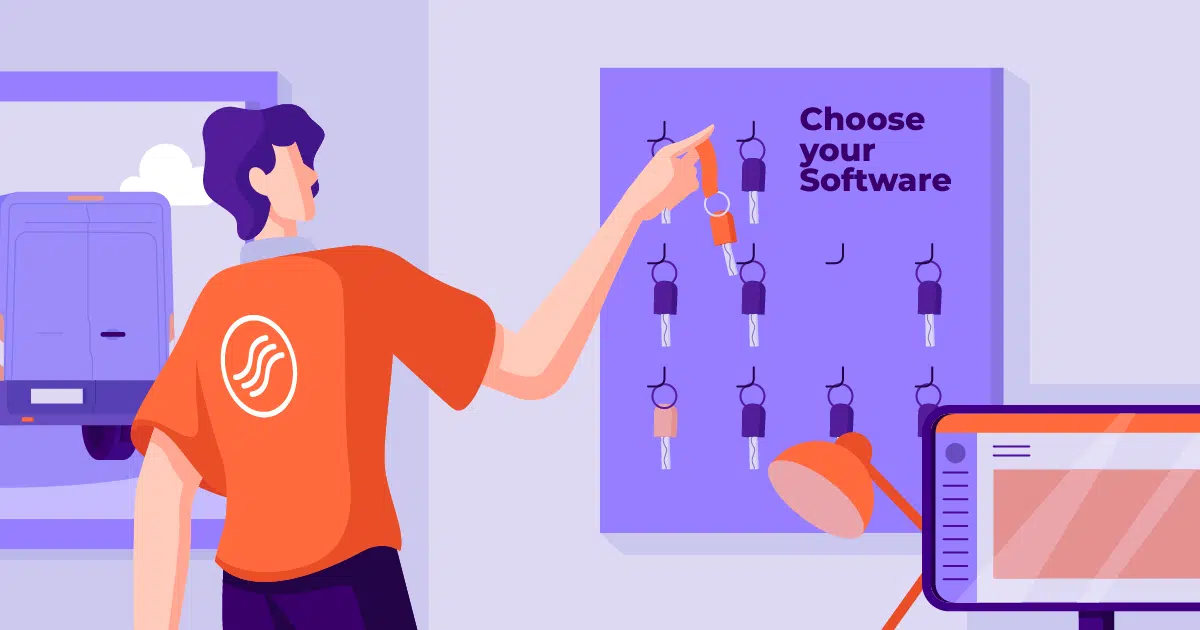The Ultimate Guide To HVAC Preventative Maintenance Scheduling in 2020
A balanced workflow and consistent revenue has never sounded so good given the year 2020 has been so far! Unexpected interruptions world wide, running your business consistently/predictable can make you the envy of many businesses that have suffered cutbacks or closures. When you have a preventative maintenance system in your commercial HVAC business, it is a great way to introduce the balance in your work force, manage a regular base of satisfied customers and lock in revenue.
To have preventative maintenance positively impact your business, you need to have a killer scheduling system and automated software to get the leverage time and effort across the office and the field team. When talking about preventative maintenance scheduling, understanding the assets you are responsible for and creating a system in which you can manage regular inspections and services and generate the required reports quickly.
Do you have a preventative maintenance plan? A good preventative maintenance plan has to be supported by understanding servicing requirements of the Asset, leveraging checklists to control the work completed and have well trained technicians to deliver a quality service consistently to customers. You might have your preventative maintenances scheduled at 3 months, 6 months or even annually and ensuring there is a set schedule agreed with the customer to ensure maintenance work isn’t forgotten or looked over.
To achieve preventative maintenance scheduling, you ideally want a system in place that can report the status of the service to the customer, generate test outcomes & reports to demonstrate that the work has been completed. Having a centralised system for all the asset, test and service information in a single place will be of great benefit.
One of the biggest challenges to maintenance strategies, is the scheduling itself along with the organising of asset information in an easily accessible place. It’s common for a preventative maintenance plan to be drawn up on a white board or by using a work diary or complicated spreadsheets that only one person can understand. The issue with using paper, whiteboards or spreadsheets to organise your schedule is that data can get lost or misinterpreted. Illegible writing on a post-it note or rubbing the wrong date off are easy mistakes but have bigger consequences for your business as a whole.
Paper based systems are notoriously hard to share with other team members and can be impossible to update when things change. This involves a lot of running back and forward to the office from the site, double data entry, piles of photocopying and hurried phone calls to confirm updates. All of these are huge time wasters in the day and can add up over a week to 10s of hours wasted running around because your schedule was mismanaged. Systems like this also remove a lot of accountability and traceability in a workplace.
When you are dealing with a high volume of clients or several assets over multiple sites, you need to be able to hold your team accountable for what work has been done and have an audit trail.
Getting your preventative maintenance schedule running smoothly you will be able to reduce wasted travel time for technicians, reduce the need for a paper based system and improve your transparency to your customers. With a systemised preventative maintenance plan you will impress your customers and make it easy to expand your customer base and win new tenders.
Preventative maintenance doesn’t just play a big part in productivity and boosted revenue, it can make sure safety procedures and standards are kept up to date. Missing a scheduled maintenance appointment where a defect might have been picked up, puts both your team and your customers at risk. Having a well implemented preventative maintenance plan can be crucial to your team’s safety in the field.
Preventative maintenance can be the next level up, to expand on your successful asset management system and can further expand on your CRM and balance your workflow.
What is a preventative maintenance schedule?
Have you ever worked from the wrong spreadsheet when scheduling the months maintenance calendar and assigned the jobs only to realise you’ve been operating in the wrong month with the wrong assets using the wrong maintenance checklist and maintenance tasks?
If your HVAC go-to business plan includes Preventative Maintenance you can achieve a balanced workflow and improve and regulate cash flow. When you manage an efficient maintenance schedule you can avoid simple mistakes like picking up the wrong schedule or forgetting about a service appointment for a piece of equipment. When working with critical equipment, you can’t afford to make simple mistakes as they can be costly both in time and money to repair.
If all you have to do for your new schedule is tweak or modify or set up new contracts, you are significantly reducing your admin time from two hours work to a few minutes.
With a preventative maintenance plan, you can boost your workflow year round when you might usually have little to nothing on. When you schedule your preventative maintenance in the downtime, you can keep your business moving year round and reduce the stress and work from the busy periods like summer and winter.
When incorporating a preventative maintenance schedule you reduce the mundane and repetitive work so you can take the stress off your shoulders and allow your software to take up the slack. When you have a schedule in place that is going to increase your efficiency and create more work in your downtime you can focus more on quality and less on admin.
Why is a preventative maintenance schedule important for HVAC companies?
Are double bookings, missed servicing and testing causing headaches and unnecessary follow-up with the customer?
The benefit of preventative maintenance scheduling is increases in quality of work performed and the reduction in errors. Having preventative maintenance field checklists on site can save technicians time and improve the quality of work done.
HVAC Checklist – Job Management Software
Preventative maintenance scheduling leveraging automated software it is important for HVAC companies to set up correctly, they create value to the business over. By doing this, you are creating a high value asset of all of your customers’ asset information, service and testing history. Getting this right also builds a rapport with the customer as they know you have all the information and not going to be selling them something which is unnecessary.
When you have a great maintenance schedule system in place you can:
- look up information with ease whether in the field or the office.
- customer’s name, email address, job location,
- asset serial numbers, model numbers, photos, product manuals
- service & asset history all at the touch of your fingertips
It will be faster to deliver a quality service and reduce the administration of managing those assets.
If you are good at managing and maintaining assets and managing a preventative schedule for your customers, you will stand out against your competitors as a professional and highly efficient business. Efficiency is important because you dont want to waste the customers time or the technicians by having unnecessary visits to the site.
Repeatable & Consistent
Remove the hassle of extensive training when you get new staff. You might be hiring staff to perform quality control, admin or handle customer relationships and this can lead to a lot of double data entry and wasted time. Essentially, any money you might have saved by hiring new staff to cope with growth, is wasted if there are inefficient systems in place. If you get caught in this loop, you will find that you can’t scale your business and grow and this can be extremely frustrating.
As you realise you might have an inefficient system in place, your next step is in finding a system that suits your needs and supports your business as its grows or more complex job workflows are taken on.
12 Steps To Preventative Maintenance Scheduling
The Benefits of a Preventative Maintenance Software for Scheduling
Why is a preventative maintenance software a great fit for your HVAC business? You can be managing a preventative maintenance contract quite well using whiteboards or spreadsheets, but there will likely be a ceiling you will hit that wont support any more clients in this space. It will just be an admin nightmare.
When you have a preventative maintenance program supporting both the asset/equipment management and the unique needs of the testing/maintenance cadence you not only prevent downtime and any possible issues on the asset (catch defects before they occur) but you also increase an asset’s life time. You can eliminate early failure of a component that can be costly for your customers and can leave you liable if you have failed your SLA.
When you have a great maintenance plan and software in place you can:
- See what needs to be Scheduled ahead of time
- See what work has or hasn’t been completed
- See at a glance all the assets on a site and their job completion status
- See Asset Location at a glance from the Office
- See photos of Asset on Site in real time
- Have correct Asset Serial and Model Number information for Warranty on hand whether in the office or in the field
- Have work orders and asset data in real time
- Have the information if you need to order a part
- Have correct Manuals and Supporting Data sheets available for the technicians in the field
- Instantly Generate reports from the Office for completed Asset Service work
- Easy management of Schedule changes with notifications to customer or technician
- Aid longer life cycle of assets
- Scheduled maintenance beats the costs of reactive maintenance where no servicing schedule is kept up
When you have a preventative maintenance program you have the right tools across the technicians and the customer.
Do you know what hats your team are wearing?
In the field service industry, as you map out your workflow you will find there are different ‘hats’ allocated to different roles or job descriptions. These hats usually include roles such as; accountants, salespersons, technicians, scheduler, administrator, manager or owner.
Preventative maintenance work will also be separated into different hats in your team and you might even find that some people wear more than one hat. For instance your administrator might also be in charge of your preventative maintenance scheduling.
Whether you are starting up a new HVAC business, or looking to boost your current revenue, preventative maintenance is a big part of success and it is crucial that your team knows which hats they need to be wearing.
A Preventative Maintenance Workflow
The key to making your preventative maintenance workflow run smoothly is knowing the maintenance steps/tasks required for the visit you are about to complete. If both the office and the technician know what visit you are up to you can plan any inventory items (parts) that may be required for the visit as well as any speciality skills (ie Electrical vs Mechanical/Plumbing). Mapping out your workflow with a HVAC Field Asset Management Software will help ensure the team know exactly what tasks and skillsets are required.
For an example download our PDF – https://share.getcloudapp.com/DOu9Zd9Q
Here it is broken down in to sections
HVAC Field Asset Management Software
- Quote to win a Job (Hat: Salesperson). – HVAC field asset management is keeping track of your quoting workflow, sending quotes and following up on quotes. Understanding gained when you lose a quote to understand why and make adjustments as necessary. Getting back to a customer promptly and in a timely manner
- Build Quote
- Estimate the hours required across the intall and separately to service that number and types of asset (maintenance contract).
- Review/ get Quote Reviewed
- Send off the Quote
- Track Quote
- Win Job (Hat: Sales person) – keep track of the Quote through to getting your customer’s on the Contract
- PO to Order Assets (Hat: Scheduling/Admin)- Ordering Assets/Equipment for the your work that has been won
- Wait for assets – Keeping track of the order, following up
- Follow up – keeping the customer up to date
- Pick up assets – ensuring assets get allocated to the right job an technician to install
- Book Install Work (Hat: Scheduler/Admin) – Scheduling the Installation work by phases.
- Install Assets (Hat: Scheduler/Admin) – For each phase of the install tracking the work, costing it back to a project
- Rough-In
- Cut Out
- Fit off
- Commission
- Start Maintenance contract (Hat : Service Manager/Scheduler) – Setup the Start and end date for the contract. Allocate the correct assets
- Estimate the hours required to complete the servicing work for Scheduling
- Setup asset Information (Hat: Scheduler) – Ensure initial Asset information is valid and is captured correctly (from installation)
- Setup Service / test Questions (Hat: Service Manager) – By Interval either 3, 6 or 12 monthly. Build the different asset testing/servicing questionnaires you’d like the technician to complete.
- When setting Up the Service Schedule Questions you can allocate which questions are asked in Monthly, 3 Monthly and quarterly Intervals, so the correct questions come up to the technicians at the correct time. This reduces the overall complexity of your asset Servicing Question Setup
- Setup Service Schedule (Hat: Service Manager) – Look at smoothing out the months across sites. You can set monthly servicing schedules for different sites.
- Technicians Complete Service work (Hat: Technician) – Technician views work required to be completed on site, and walks through each asset and item and completes it’s scheduled maintenance questions. See additional sub – steps below
- Completes Monthly/Quarterly/6M/12M Maintenance Questions
- Updates SWMS
- Raise Any Defects
- Update Test Status
- Update Hours Servicing
- Office Generates Asset Test Report (Hat: Scheduler/Admin) – Identifies Job Visits where asset testing has been completed and generates asset test reporting for completed work.
- Generate Asset Test Reports
- Review asset test reports
- Update asset tests if required for completeness
- Send to Customer
- Renegotiate Next Contract (Hat: SalesPerson) – Review performance of last contract, set up a Quote for Next Servicing Maintenance Period
- Check poorly performing assets
- Check Profit and Loss of Last Contract
FieldInsight & Preventative Maintenance Software
Manual data entry processes in software like Excel or Google Docs can be great for some businesses but for those looking to reduce admin and optimise the scheduling… automated software is key. Now you know how important preventative maintenance scheduling and how great software can systemise and automate these workflows.
You need a system that is going to systemise your workflow to remove admin hours rather than add complexity. FieldInsight is preventative maintenance software that will help you get home on time and stop the midnight or weekend burn. Have all the inputs for invoicing, asset reports or payroll in the one place.
Book a Demo and get your preventative maintenance tasks on track. See what FieldInsight could be doing for you and your HVAC business today.
What You Should Do Now
- Book a Demo. You’ll be in touch with an automation expert who has worked in this space for over 5 years, and knows the optimal workflow to address your needs.
- If you’d like access to free articles about managing HVAC workflows, go to our blog.
- If you know someone who’d enjoy reading this page, share it with them via email, Linkedin, Twitter, or Facebook.






